Making Modernism – Royal Academy, London (LAST CHANCE TO SEE)
A survey of four female painters working in Germany at the start of the last century, Making Modernism leaves me pondering the dilemma of female artists then and now.

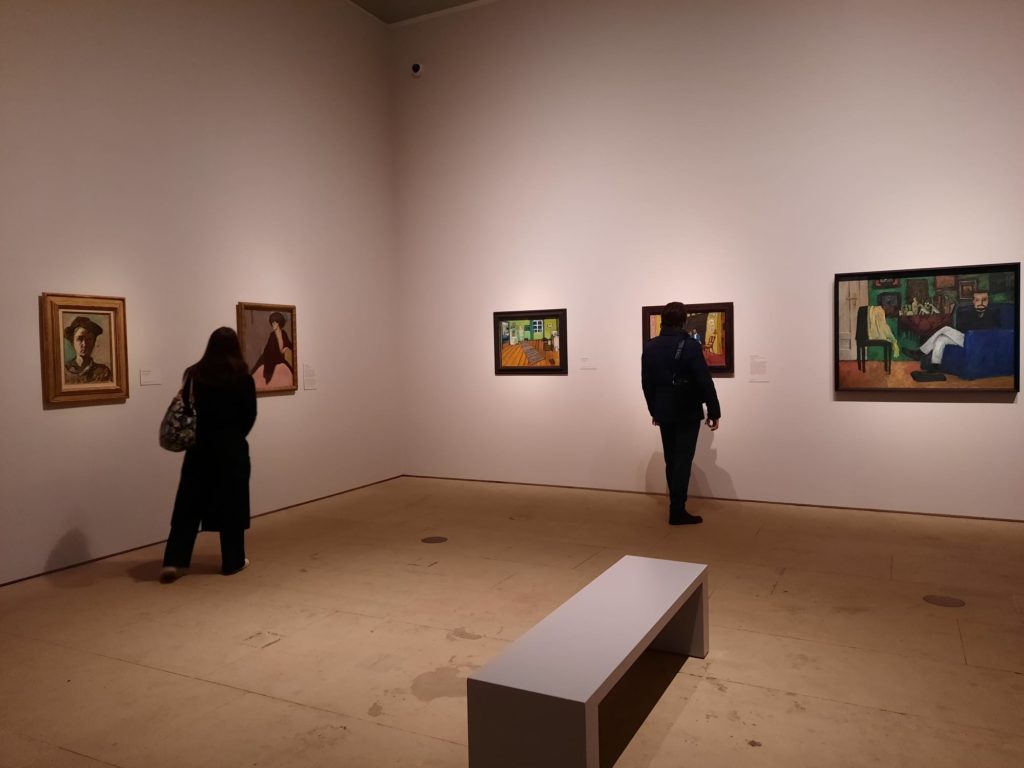
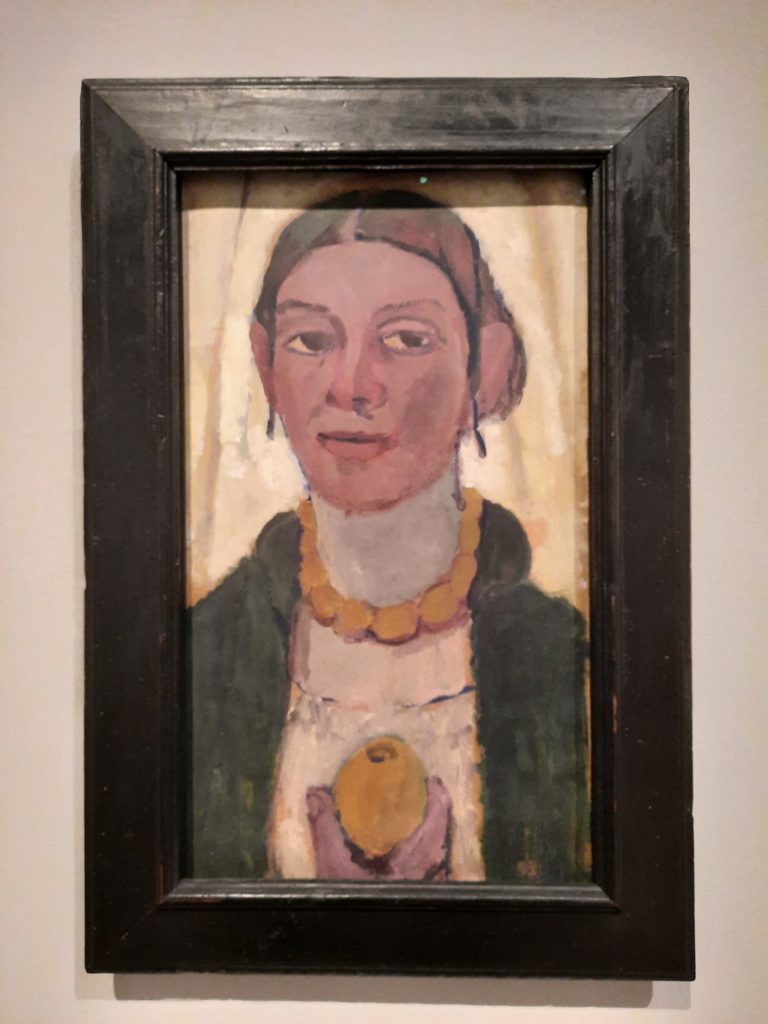
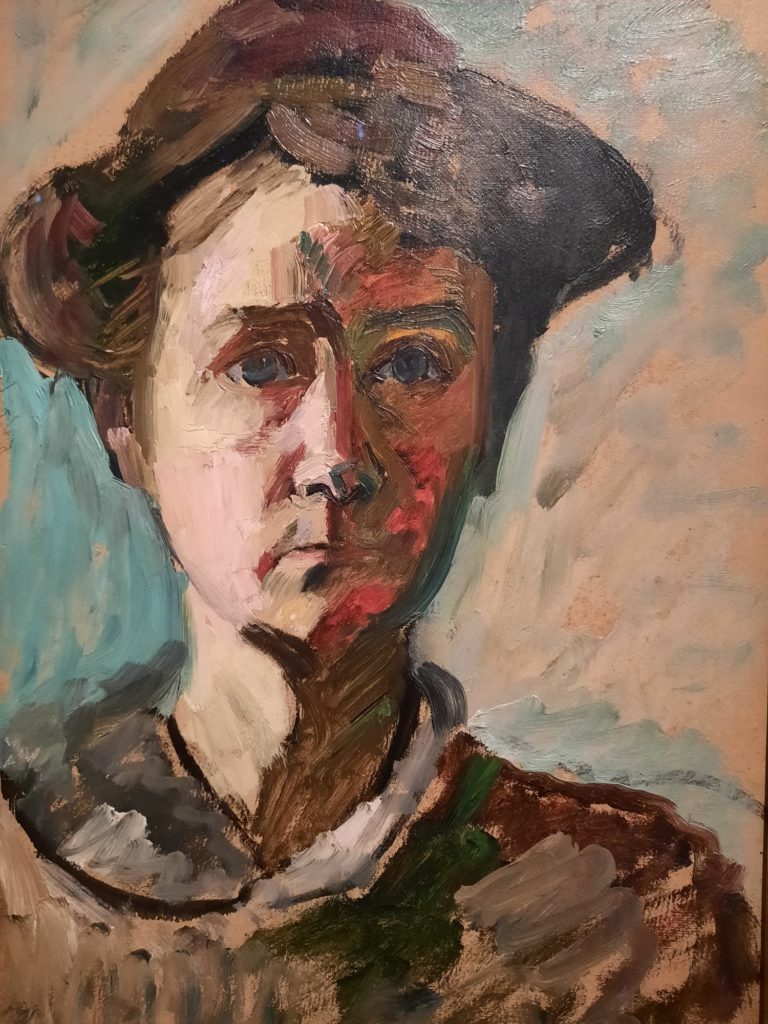
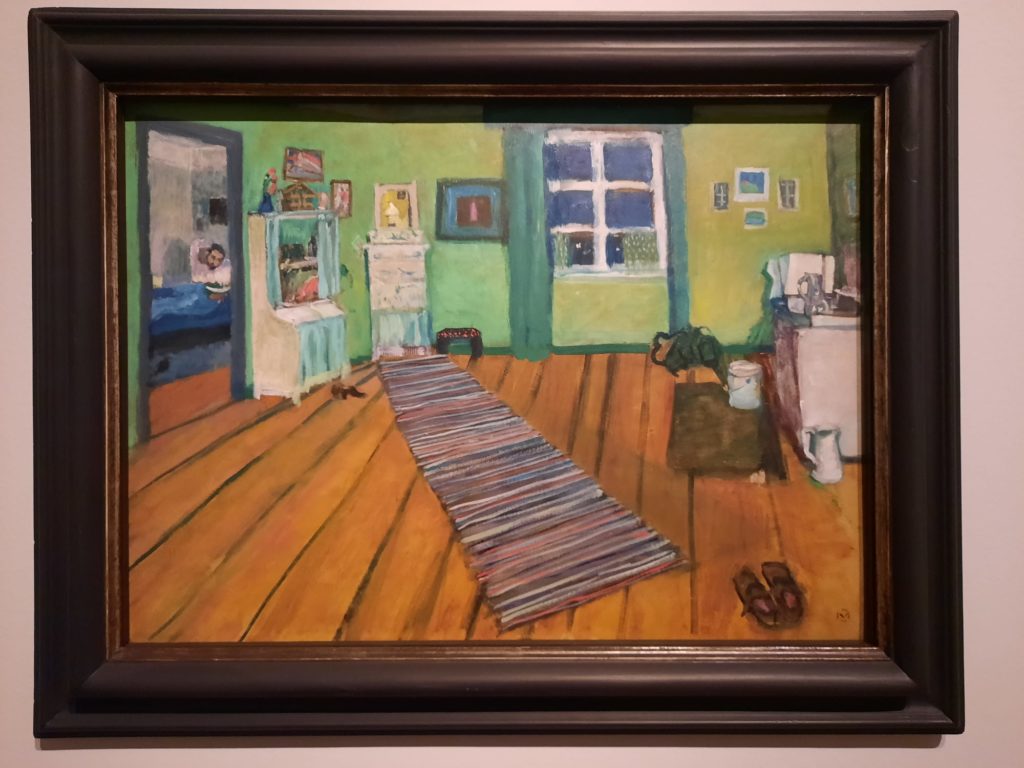
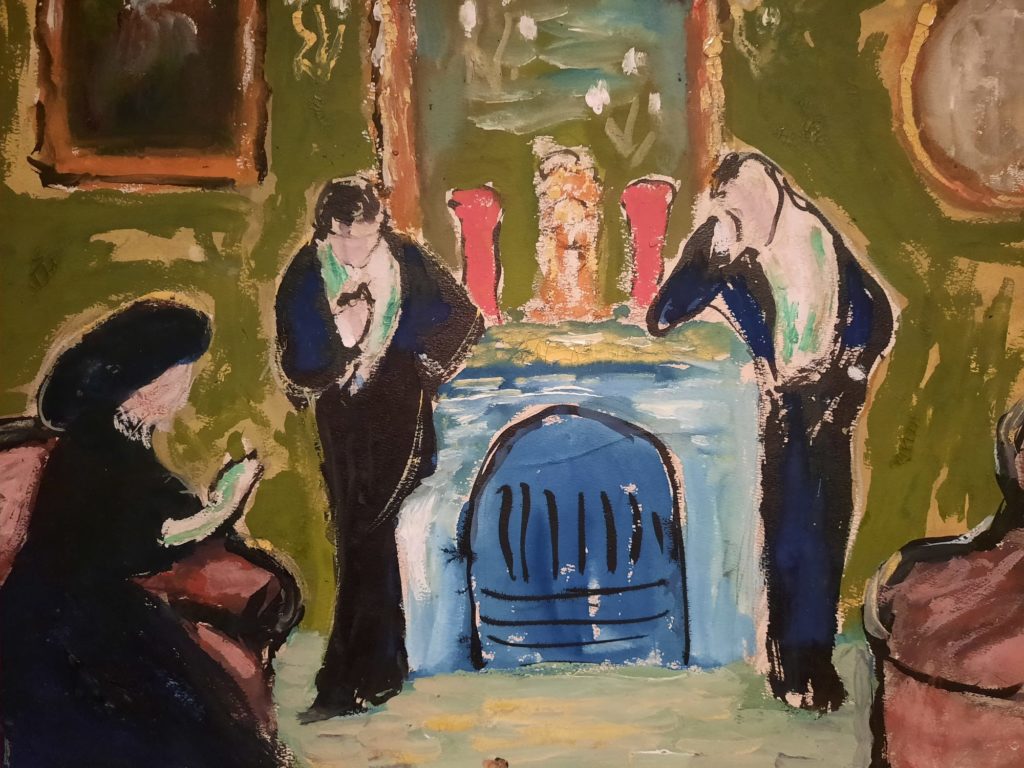
Making Modernism
A few days on from seeing this exhibition at the Royal Academy, I have yet to unpick my thoughts and decide what to make of it. Making Modernism is a survey of women ‘hidden from the history of 20th-century modernism’. The spotlight is on four in particular: Paula Modersohn-Becker, Käthe Kollwitz, Gabriele Münter and Marianne Werefkin. Women who share in common the fact that they were working in Germany, with additional overlap in style or themes.
The exhibition is in one of the Royal Academy’s smaller spaces, where we also saw this, this and this. Personally I like smaller, more intimate exhibition spaces on the whole. But for this particular exhibition, it means getting to grips with a thesis as well as a number of artists in only three rooms. Perhaps the difficulty of this task is why I had (still have) unanswered questions.
Ostensibly, the exhibition is about pioneering women. Those who were central to radical 20th Century art movements, but are less well-known than their male counterparts. Is this proven within this exhibition? I’m not sure. The central conflict which for me was not resolved was the chicken and egg faced by female artists. When an artist is excluded from opportunities in their work or education, or must juggle additional societal roles and expectations, should we extrapolate from the resulting artworks and imagine how things might have been with an even playing field? Or is the more urgent task to dismantle the prejudices inherent in art history and revalue different themes, subjects and qualities?
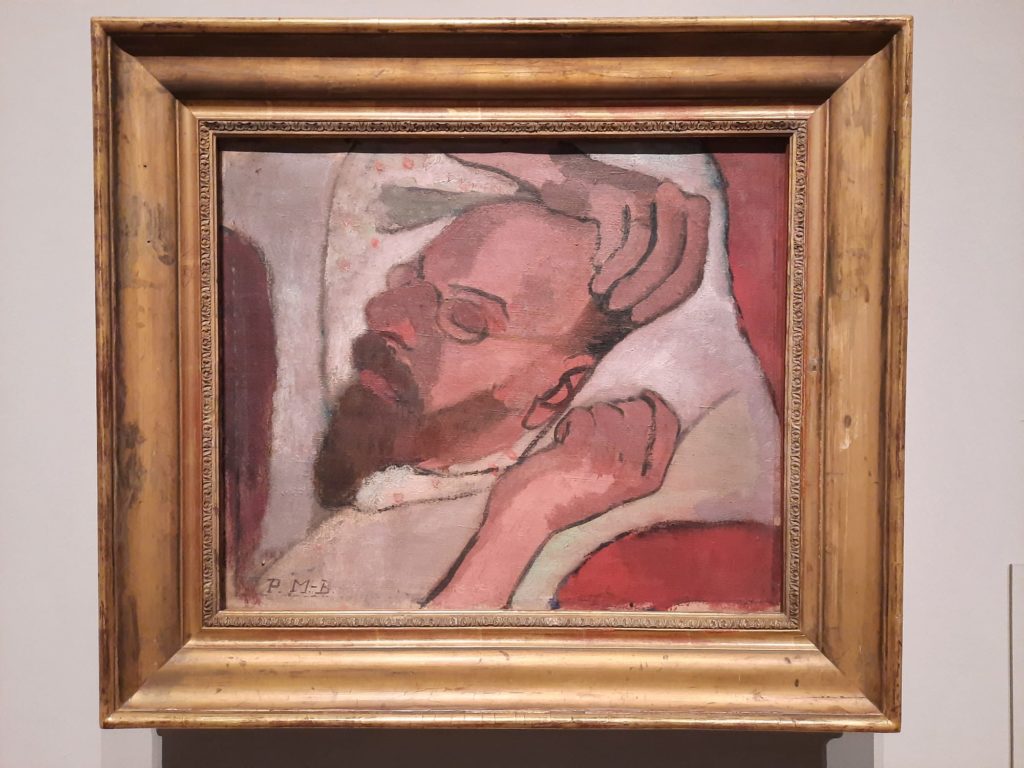
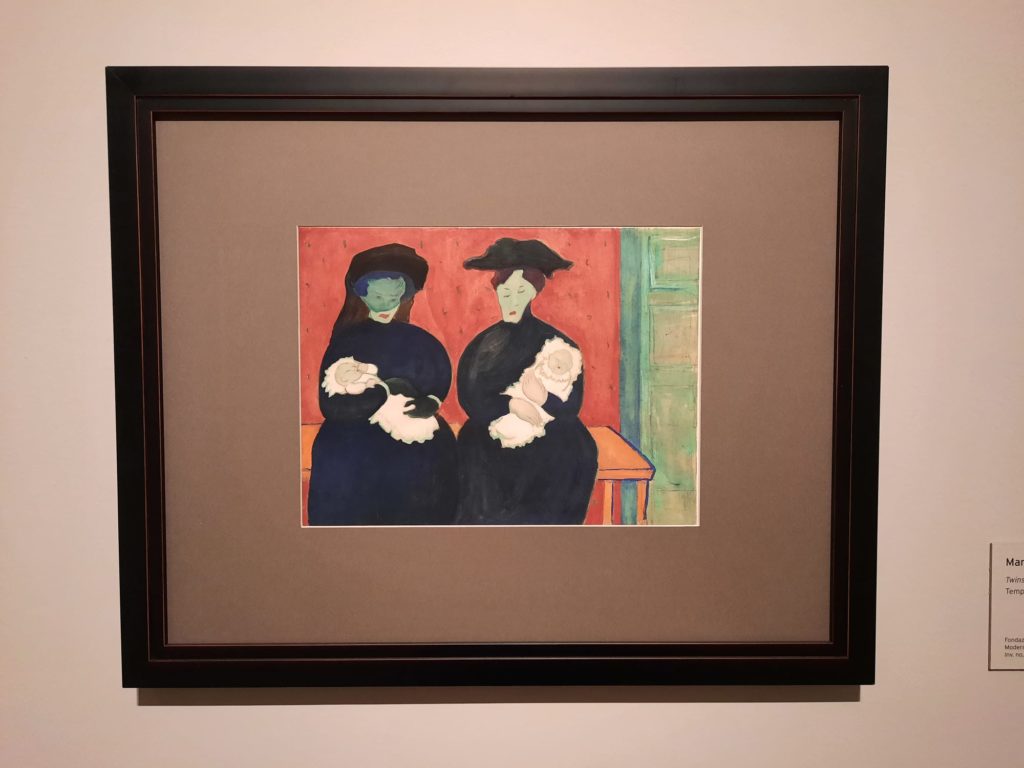
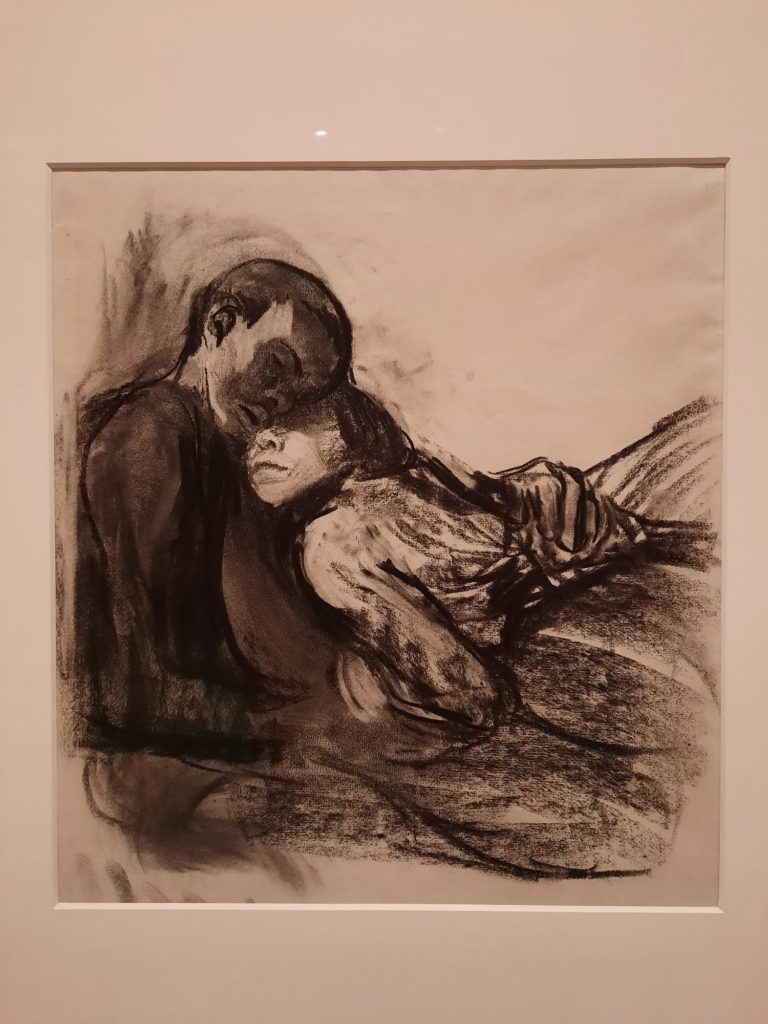

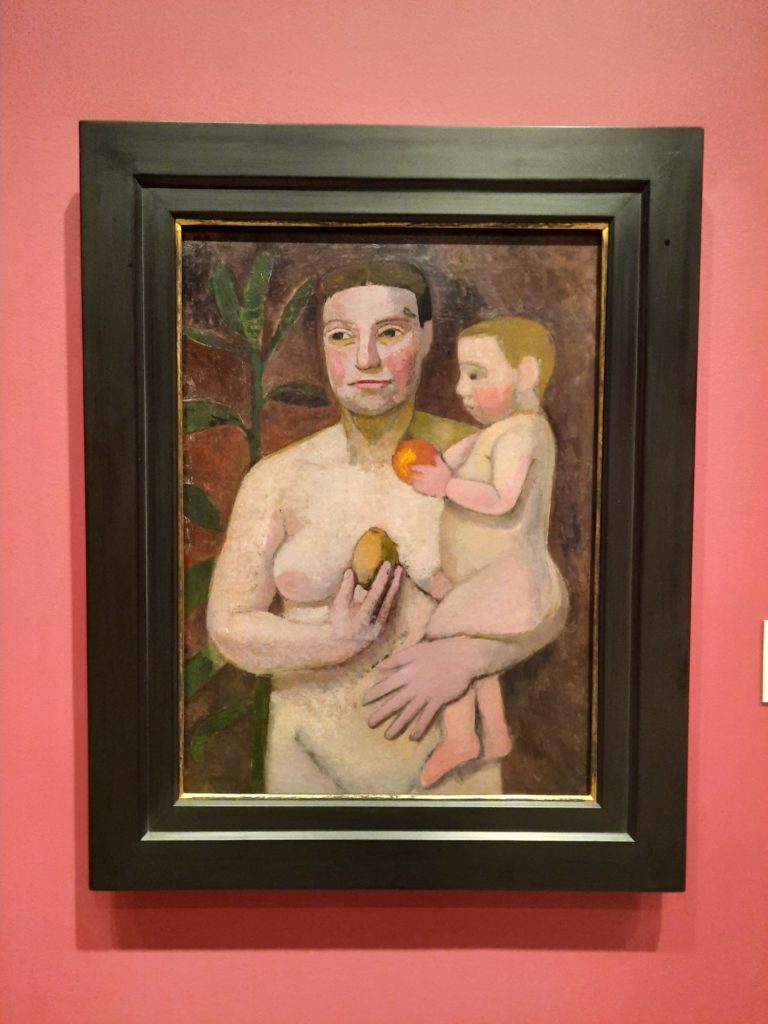
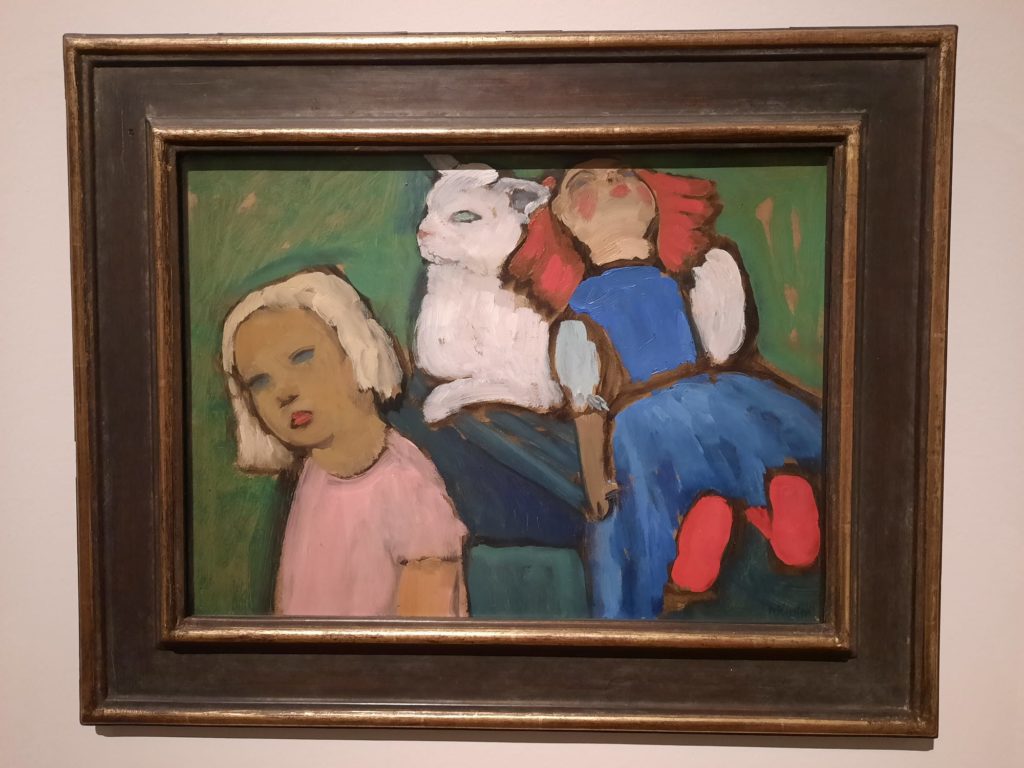
Germany’s Pioneering Female Artists
Let’s pause for a bit from getting all philosophical, and take a look at what’s actually on view. As I mentioned, the exhibition focuses primarily on Paula Modersohn-Becker, Käthe Kollwitz, Gabriele Münter and Marianne Werefkin. Modersohn-Becker I was most familiar with as I’ve been to a dedicated museum in Bremen. She imbibed a range of artistic styles at home and while living in Paris. But of the artists featured here was most oppressed by societal expectations. Having reconciled with a husband who did not support her fullest artistic aspirations, she died of an embolism aged 31 following post-partum bed rest. Seeing her strong, unromanticised figures, or influences including Fayum mummy portraits, you wonder what might have been.
Münter and Werefkin I was least familiar with. Münter was part of the pre-WWI Blaue Reiter (Blue Rider) Expressionist group. The works on view are aesthetically pleasing, but ultimately I didn’t come away feeling like I understood her artistic perspective. Werefkin was a Russian artist, connected with Alexei Jawlensky and most known for her Expressionist work. Stateless after the Russian Revolution, she co-founded the movement Der Große Bär (the Great Bear) and ultimately settled in Ascona in Switzerland where there is a museum of her work.
Käthe Kollwitz was an exceptionally talented artist, whose life and work was marked by personal tragedy. She worked in a number of media, but the fact that a lot of her work was on paper (etchings, prints and drawings) may be partly why she is not better known. The raw power of the images by Kollwitz on display in this exhibition is often startling. In my opinion they consistently stand out against the flat planes of Expressionist colour.
As with other exhibitions I’ve seen in this space at the RA, this is primarily an excellent opportunity to see works of a type not well represented in UK collections. The bulk of the loans are from German museums or the one I mentioned in Ascona. For that alone it is worth seeing, I just wish there were a few more of them so I could form firmer impressions of each artist in their own right.

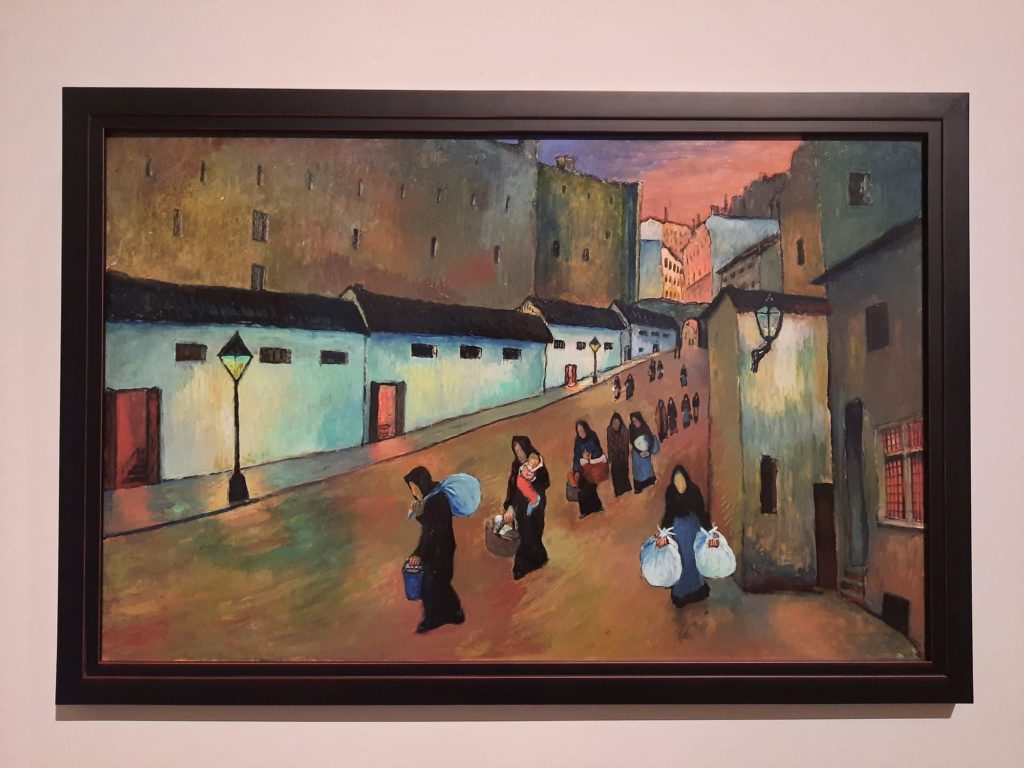
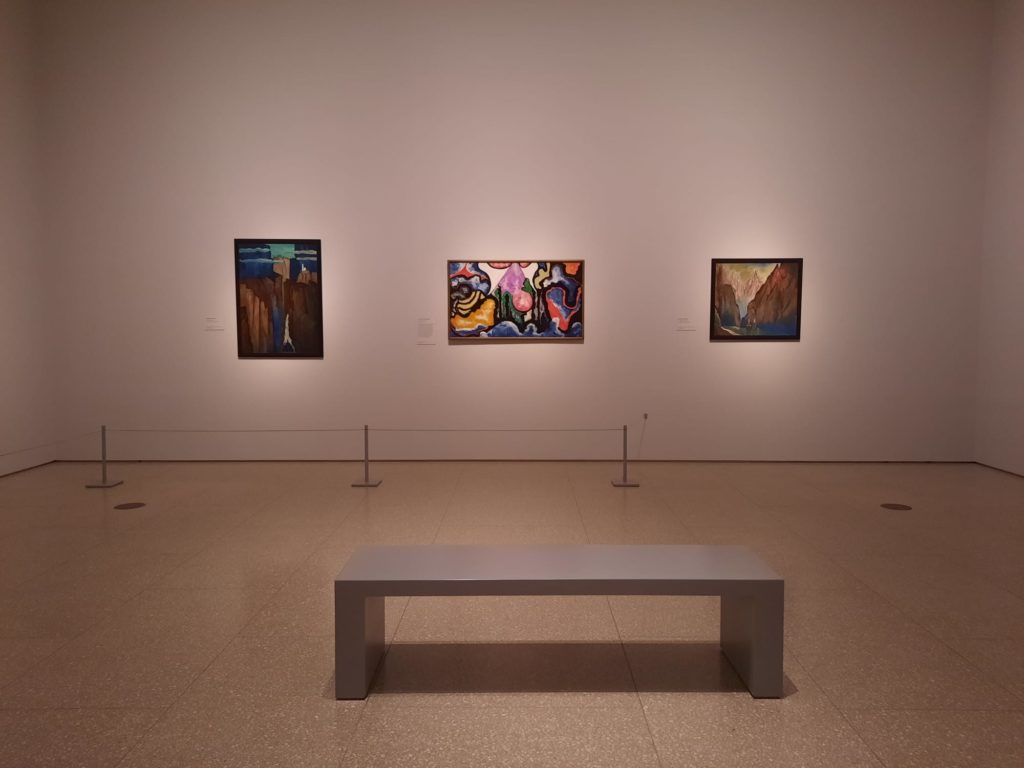
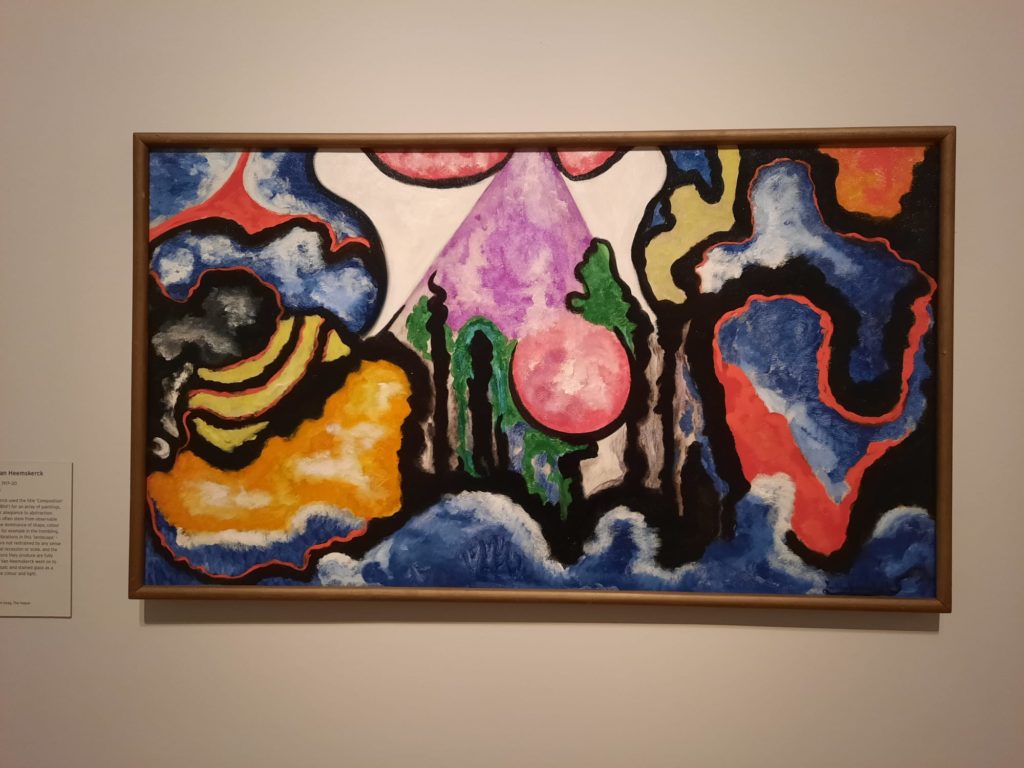
Back To The Philosophising
Let’s go back to that point around the chicken and egg of female artists for a moment. On the one hand, it’s a fact that for various reasons, these women were on the whole not depicting the types of scenes we elevate to a higher level within art history. Often they depicted themes like children or interiors. To pretend this isn’t the case would be disingenuous. And partly this exhibition looks at the reasons why this was the case. On the other hand, does continuing to group their works through this lens perpetuate stereotypes about female artists? Maybe.
It might come down to space. While this exhibition has been on, the RA has had William Kentridge and another exhibition in their main galleries. Perhaps different scheduling might have allowed more space to tell the story of these artists in greater depth. As it stands I glimpsed flashes of brilliance, and understood some of the societal and personal challenges these women faced, but haven’t rewritten my internal understanding of modernism.
I read a few reviews in preparation for my own, and I concede it’s an exhibition everyone seems to respond to differently. If you haven’t yet been, therefore, it’s worth a visit to make your own mind up. As for me, I look forward to seeing what’s next at the RA. And perhaps understand a little better the limits of my favoured small exhibition format.
Salterton Arts Review’s rating: 3/5
Making Modernism on until 12 February 2023
If you see this after your page is loaded completely, leafletJS files are missing.

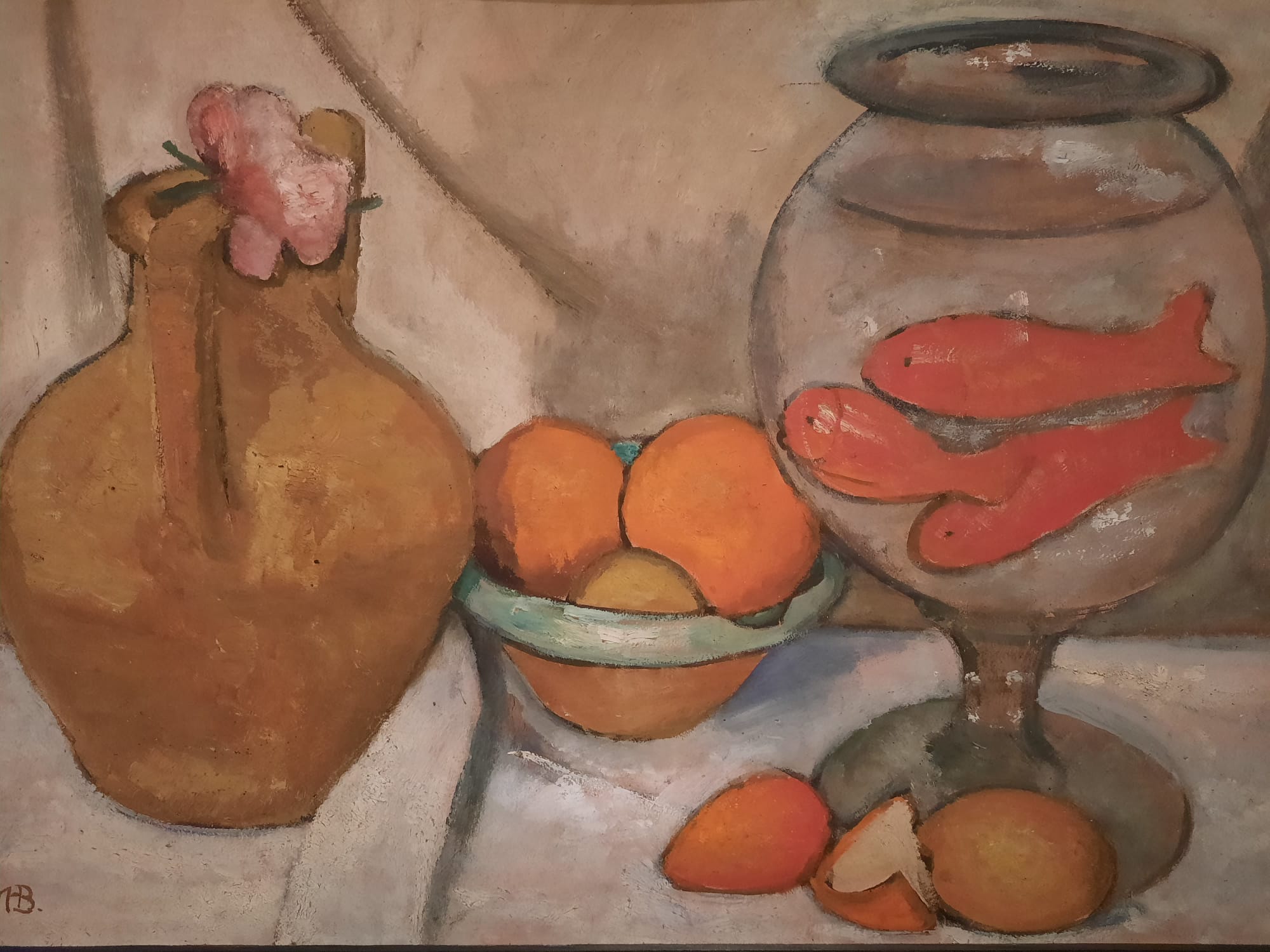
I sense your lack of resolution…it’s not clear what you make of it, what you conclude or what your opinion is of this exhibition.
Agreed, I think the exhibition was just too small for me to make my mind up one way or another. It’s a great sized space to show off a single collection or put two artists in conversation, but four artists plus some additional ones and a feminist thesis requires a bit more breathing room! Some nice works nonetheless.